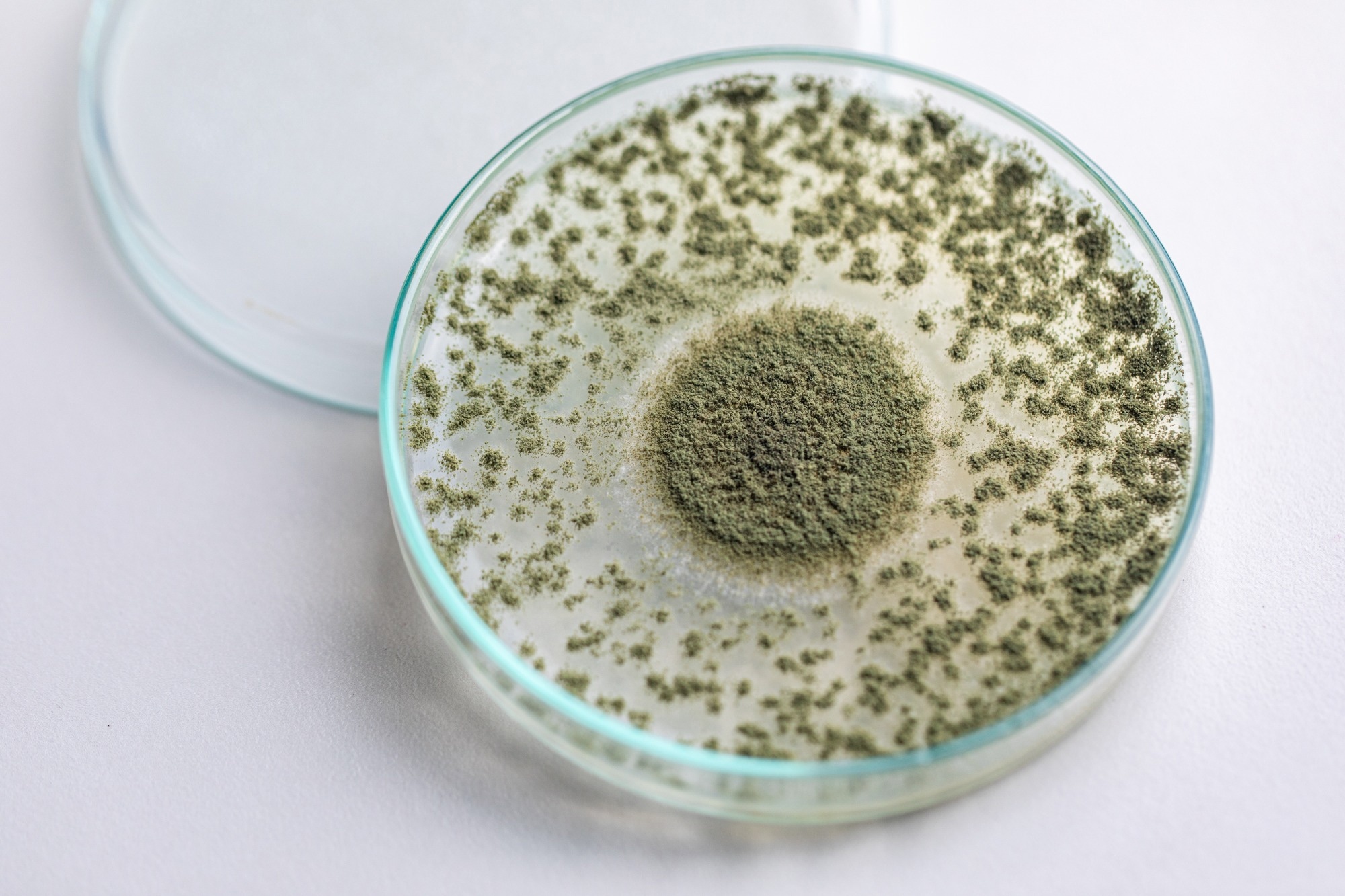In a recent study published in Nature Communications, researchers developed a modular synthetic biology toolkit for Aspergillus oryzae, an edible fungus used in fermented foods, protein production, and meat alternatives.
 Study: Edible mycelium bioengineered for enhanced nutritional value and sensory appeal using a modular synthetic biology toolkit. Image Credit: Rattiya Thongdumhyu/Shutterstock.com
Study: Edible mycelium bioengineered for enhanced nutritional value and sensory appeal using a modular synthetic biology toolkit. Image Credit: Rattiya Thongdumhyu/Shutterstock.com
Background
Food production is estimated to account for a third of greenhouse gas emissions worldwide, contributing to biodiversity loss, environmental degradation, and new diseases.
Transitioning from industrial animal agriculture to alternatives is necessary to mitigate the planetary impact and sustainably feed the global population. Microbial food production offers improved safety and efficiency, more precise production control, and reduced animal suffering.
Filamentous fungi are a diverse group of microbes, including mushrooms and molds, and are highly advantageous for microbial food production.
Besides, their naturally high secretion capacity makes them potent hosts for protein production. In addition, owing to its filamentous structure that mimics the animal muscle structure, fungal biomass (mycelia) can be formulated into alternatives to meat (mycoprotein).
The study and findings
In the present study, researchers developed a modular synthetic biology toolkit for A. oryzae, a safe and edible fungus with a history of palatable consumption.
They created an alternative, easy-to-use clustered, regularly interspersed short palindromic repeats (CRISPR)–CRISPR-associated protein 9 (Cas9) approach, compatible with existing reagents.
This approach involved transforming CRISPR-Cas9 ribonucleoprotein complexes directly instead of encoding single-guide RNAs (sgRNAs) and Cas9 from a plasmid.
Moreover, the DNA template used to fix double-strand breaks contained an orotidine-5′-phosphate decarboxylase gene (pyrG) marker for positive and negative selection.
The system was designed such that a successful loop out of pyrG could only occur upon integrating the fixing template at the site of interest, wherein identical 300 bp sequences will flank it.
Ectopic integrations due to non-homologous end joining (NHEJ) in this system cannot loop out or survive on media with 5-fluoroorotic acid. A vital feature of this design was the recyclability of the pyrG marker upon insertion at the correct locus.
Further, candidate-neutral loci in A. oryzae were investigated to integrate genes for overexpression. The researchers explored the intergenic regions in the A. oryzae RIB40 genome and ranked the expression of two genes surrounding them.
A list of candidate loci predicted for high gene expression was generated, and ten regions were selected for further analysis.
Next, the team integrated green fluorescent protein (GFP) cassettes under the control of a strong, constitutive promoter (pTEF1) and examined fluorescence on the conidia of looped-out strains.
Of the ten loci, nine exhibited highly efficient integration, and GFP expression was detected from eight of these. All loci demonstrated higher expression than the positive control.
Next, the researchers aimed to establish a synthetic expression system (SES) in A. oryzae. To this end, they evaluated the ability of a characterized synthetic transcription factor (sTF) to drive the expression of mCherry from a core promoter (Cp).
They genetically integrated the sTF and induced a low basal expression under a Cp from A. niger. Separately, an mCherry cassette with 6x upstream activating sequences (UAS) was integrated at a different genomic location upstream of the Cp.
The team observed mCherry expression in conidia and mycelia. Both the sTF and UAS were required for the activity. Next, the team aimed to bioengineer an edible mycelium, focusing on the bioactive amino acid ergothioneine.
They speculated that its production could be increased by modulating the expression of endogenous ergothioneine biosynthetic genes in A. oryzae.
Orthologs of Egt1 and Egt2, enzymes from Neurospora crassa implicated in ergothioneine biosynthesis, were identified in A. oryzae.
The orthologs were then inserted at neutral loci; both genes were expressed under a bidirectional promoter or separately at different locations. Ergothioneine levels in the mycelium were low in RIB40, the background strain.
However, its levels were 11- and 21-fold elevated in bidirectional and separate promoter strains compared to RIB40. Ergothioneine levels in the bidirectional promoter stain were similar to those in oyster mushrooms. By contrast, its levels were 1.5-fold higher in the separate promoter strain.
There were no differences in protein content between engineered and wild-type strains. Nevertheless, a slight growth defect was observed with ergothioneine overproduction.
Next, the researchers applied these tools to enhance the sensory properties of the edible biomass. They targeted heme biosynthesis, as heme gives meat its (red) color and flavor upon cooking.
They identified potential heme biosynthetic genes in A. oryzae and targeted the expression of five predicted rate-limiting enzymes. Additionally, two copies of soy leghemoglobin were expressed as a potential heme sink, as high levels of free heme could be cytotoxic.
The biomass of the engineered strain was four-fold higher than that of the non-engineered strain.
Upon harvesting, the biomass was red compared to off-white in RIB40. This color difference persisted after cooking, enhancing the meat-like appearance of the fungal biomass.
The engineered mycoprotein contained all essential amino acids. Protein content or growth yield was not lower in the engineered strain.
Conclusions
The researchers developed a synthetic toolkit to integrate and regulate genes and pathways. They leveraged this toolkit and engineered A. oryzae mycoprotein to (over)produce ergothioneine at levels far greater than in natural dietary sources, i.e., mushrooms.
Additionally, the mycelia were engineered to overproduce heme for enhanced color and flavor. Notably, this work represents an early prototype; further evaluations of sensory attributes, food safety, consumer acceptance, and regulatory landscape are required.